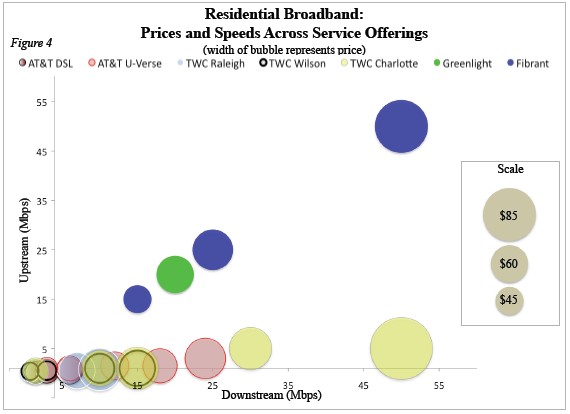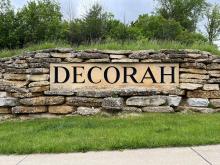By
on

For years, the North Carolina General Assembly has considered bills pushed by cable lobbyists to ban community networks. A new analysis from the folks at MuniNetworks.org shows that community fiber networks offer the most advanced services in the state -- faster speeds at lower prices. Preempting these community networks would cripple North Carolina's ability to compete in the digital future.
Read the Report [pdf]
Read the Press Release Following on the heels of similar findings for Minnesota, smaller towns in North Carolina that have built community owned fiber networks offer far superior services to those found in the metro area around Charlotte and the famous Research Triangle. The two community fiber networks are Wilson's Greenlight and Salisbury's Fibrant. We have written frequently about both - Fibrant coverage and Greenlight coverage. A chart and explanation from the report:
Read the Press Release Following on the heels of similar findings for Minnesota, smaller towns in North Carolina that have built community owned fiber networks offer far superior services to those found in the metro area around Charlotte and the famous Research Triangle. The two community fiber networks are Wilson's Greenlight and Salisbury's Fibrant. We have written frequently about both - Fibrant coverage and Greenlight coverage. A chart and explanation from the report:

Comparing the tiers of residential service from Wilson or Salisbury against the providers in the Raleigh area (figure 4), shows that the communities have invested in a network that offers far faster speeds for less money than any of the private providers (Greenlight offers more packages than depicted as only unbundled options are displayed). Whether communities in North Carolina are competing against other states or internationally for jobs and quality of life, they are smart to consider investing in a community fiber network. This chart actually uses the new FCC definition for “basic broadband,” which is 4 Mbps downstream and 1 Mbps upstream. The packages that are plotted below and to the left of the origin are no longer technically broadband. Notice how many of the plans offered by private providers barely qualify as broadband. In fact, as neither AT&T nor Time Warner Cable offer upstreams of at least 1Mbps in Raleigh, their services do not meet the new FCC definition for broadband.
Geoterm







